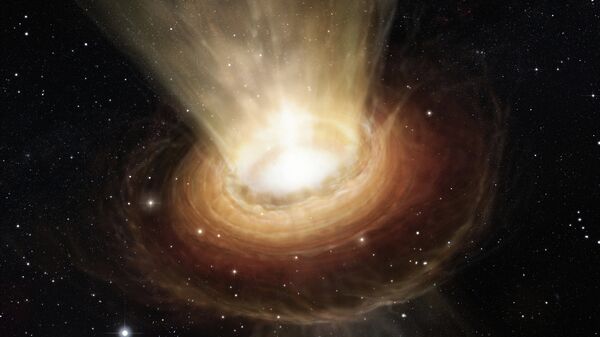Scientists have discovered the composition of the powerful galactic winds emanating from supermassive black holes, according to new research published in the Monthly Notices of the Royal Astronomical Society Letters journal.
The revelation is key to explaining how the supermassive black holes at the heart of many galaxies impact the development of their neighbourhoods.
When black holes grow rapidly it is because they swallow up material in the galaxy at swift speeds, generating powerful galactic winds.
These winds generate quasars which can obliterate material at the heart of galaxies and impede new stars from forming.
Although it is established that galactic winds have a direct effect on how black holes influence the development of the galaxies around them, it was a mystery to scientists how this phenomena actually occurs.
However, new research by scientists at the Instituto de Astrofisica de Canarias (IAC) in the Canary Islands has developed a theory supported by analysis of gas in the galactic winds blown by black holes.
The researchers used the EMIR infrared spectrograph at the IAC's new telescope to determine the compositions of the galactic winds.
"EMIR has allowed us to study the winds of ionised and molecular gas from this quasar by using the infrared range," explained Dr Ramos Almeida, lead author of the study.
According to the new data, ionised wind is even faster than the molecular wind, reaching speeds of up to 1,200km per second.
Despite this, it’s the molecular wind that is responsible for expelling gas from reservoirs of the galaxy - up to 176 solar masses annually.
"This analysis is very important because they don't always show similar properties, which tells us a great deal about how these winds are produced and how they affect their host galaxies."
"New observations with ALMA will let us confirm this estimate," added Dr Jose Acosta Pulido, co-author of the study.




